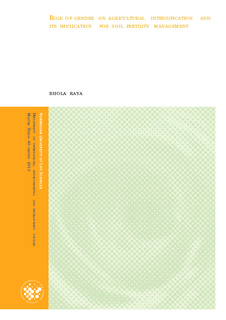| dc.description.abstract | This paper assesses gender differences in agricultural activities that have a potential effect on soil fertility in the Ansikhola watershed of the mid-hill region of Nepal. Multiple methods were used to collect data, including a questionnaire survey (310 households), six focus group discussions, five key informant interviews and direct observation to generate information about the gender role in agricultural activities. Four replicates of soil sample are collected from each site to analyze soil fertility in the watershed. Results indicate that women are involved in land clearing, farmyard manure (FYM) collection, transport and application, planting and household works whereas men are involved in plouging, chemical fertilizers and pesticide application, marketing and selling of the products. But there has been equal involvement of women and men for decision regarding choice of crop, buying of chemical fertilizers and pesticides. But this has been limited to the upper two caste group which is not seen in the lower castes. Soil sample analysis shows that
There is a gradual decrease of soil carbon, nitrogen, phosphorus and potassium with depth in all types of cultivated land but the bulk density did not show such pattern. With the introduction of intensive agricultural practice in this study site, there is maximum use of chemical fertilizer as well as FYM to increase yield. Hence intensive agricultural land had a significantly higher value of soil carbon, soil nitrogen, phosphorus and potassium but the bulk density was also higher indicating the negative consequences of soil compaction. The highest values of nitrogen, phosphorous and potassium were seen in the surface layers of class A and class B types of land, which was attributed to the recent use of fertilizers in the field. Thus, this study revealed that there is an increasing use of fertilizers in the intensive agricultural practice compared to the traditional one. | no_NO |
